Artificial Christmas trees offer a plethora of shapes and sizes to choose from, including but not limited to pencil, slim, narrow, full, upside-down, and half trees. Among these, slim and narrow variants tend to be the most favored. However, the terminology can be a bit baffling – is a slim tree thinner than a narrow one, or is it vice versa? Let’s get straight to the point and unravel this mystery.
What is the difference between a slim and narrow tree?
The Slim Christmas Tree is an excellent choice when you’re working with limited floor space for a Christmas tree. Its smaller base diameter, ranging from 29-40 inches, makes it thinner compared to its Narrow cousin. With heights ranging from 5 to 12 feet, the base diameter will vary accordingly.
This size tree fits perfectly in small or medium-sized family rooms or living rooms. It can also add an extra touch of beauty as a second tree in a formal dining room, enhancing the ambiance during holiday meals. Additionally, you can place a slim Christmas tree in larger indoor entryways for a grand and impressive entrance.
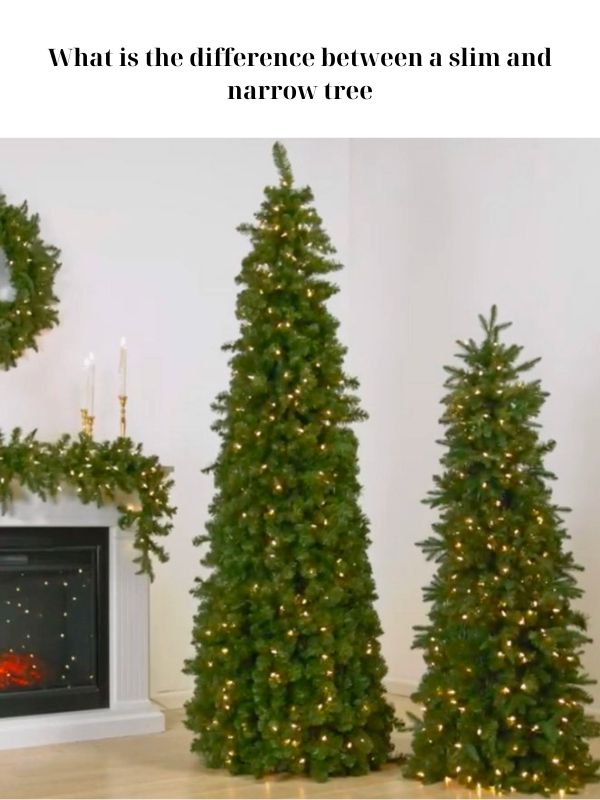
The Slim Christmas Tree
When you take a gander at a slim Christmas tree, you’ll notice it’s noticeably skinnier than a narrow tree – the diameter at its base is smaller. Slim trees can vary quite a bit in size, with diameters ranging anywhere from 29 to 40 inches. And the height? That depends on the specific tree you’re looking at; they can stand anywhere from 5 to a towering 12 feet.
The slim artificial Christmas tree is an excellent choice for those of us who don’t have a ton of floor space to spare. Whether your living room is cozy or spacious, there’s a slim tree that’ll fit just right. And don’t limit yourself to just the living room – these trees can add a festive touch to your dining room or bedroom as a secondary Christmas tree. Or, imagine welcoming your guests with a slim tree in your entryway. It’s like a grand, holiday hello every time someone steps through the door.
Read more: best cyber Monday deals on Christmas trees
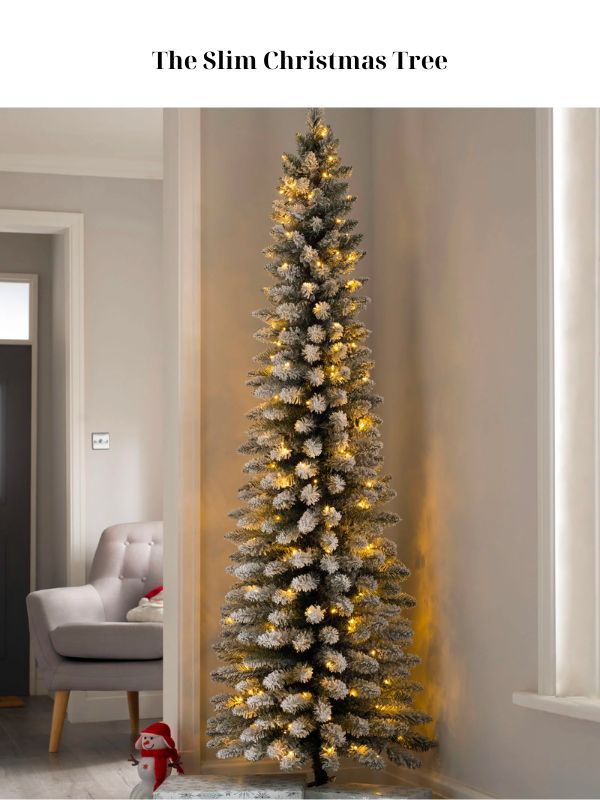
The Narrow Christmas Tree
Despite the name, narrow artificial Christmas trees are actually wider at the base compared to slim ones. Some folks even call this size a ‘full’ Christmas tree. The base of these trees typically measures somewhere between 44 and 54 inches – but remember, this can vary depending on the tree’s height. The taller the tree, the larger the base, ensuring a full and festive shape.
Narrow trees are perfect for those who have ample space to spare. They shine in large family rooms or living rooms – just make sure they have enough room to really spread out. If you try to squeeze them into a too-small space, they’ll look cramped and out of place. And don’t forget about ceiling height! If your ceilings barely accommodate the height of the tree, it might end up looking squashed.
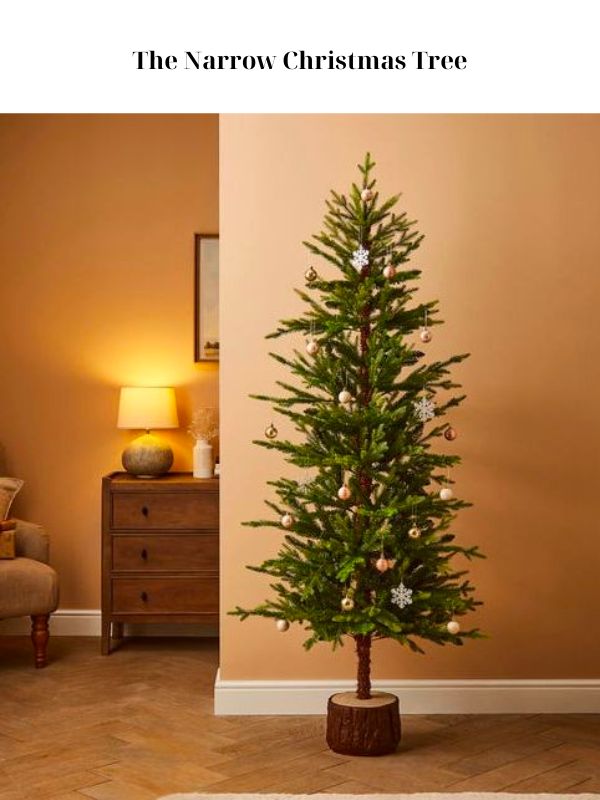
How to Know the Difference
To figure out if you’re dealing with a narrow or slim artificial Christmas tree, just take a look at the specs – they’re usually sold with both the height and base diameter clearly listed.
Well, that’s where your trusty tape measure comes in. You’ll want to measure the area where you plan to place the tree to ensure it fits comfortably. No one wants a narrow tree crammed into a corner, or a slim tree swallowed up by a vast room.
So, take a moment to size up your space. Consider the floor area – will a slim tree fit without squishing your furniture? And don’t forget about ceiling height – if you’re eyeing a narrow tree, make sure there’s enough clearance for the tree and that fabulous topper you’ve chosen. The key here is balance: enough space for your tree to shine, but not so much that it gets lost.
What is the cost difference?
When you’re shopping around and comparing two identical trees – one slim, one narrow – you’ll generally find that the narrow tree carries a heftier price tag. Why? Well, narrow trees are decked out with more branches, lights and other bits and bobs, which bumps up the manufacturing cost.
So, when it’s time to pick your perfect tree, think about what fits your budget and your wish list. Don’t forget to consider factors like the number of lights, the number of branches, the material of the branches, and the size of the tree itself. Remember, the best tree for you is one that ticks all your boxes without breaking the bank.
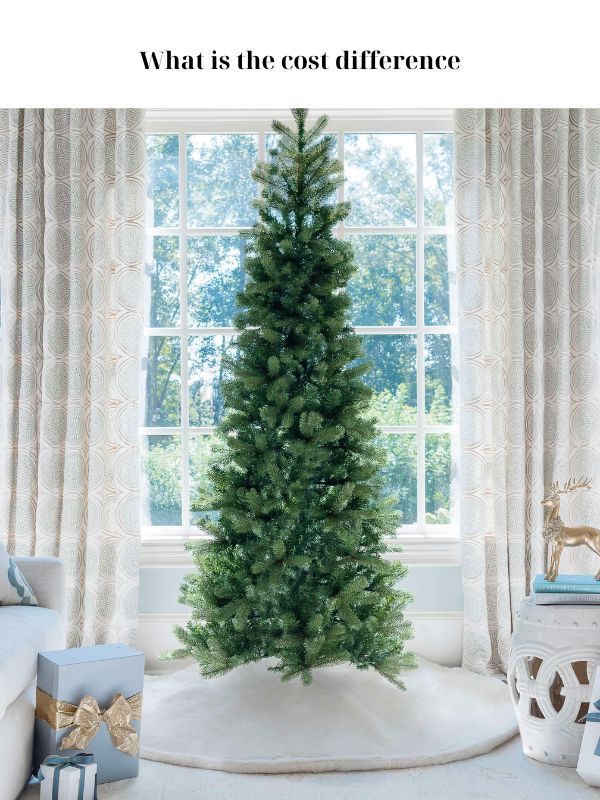
How do I find out if a tree is slim or narrow?
To discern if a Christmas tree is slim or narrow, you need to get familiar with its specifications and measurements. Most online shopping sites will clearly display the tree’s dimensions, including its height and base diameter. Keep these two measurements in mind when deciding which tree would be the best fit for your space.
If you’re physically in the store, you can find this information on the tree’s tag. Can’t locate it on the tag? Don’t sweat it – the tree’s packaging or box should also indicate whether the tree is slim or narrow.
What size tree is right for me?
Choosing between a slim or narrow Christmas tree involves some measuring to ensure the right fit. You might have your heart set on a narrow tree, but it could end up being too large for your designated area. Similarly, a slim tree in a large space might seem out of place.
Start by deciding where you want your tree to be during the festive season. Then, with a tape measure, determine the size of the floor area. Check if this space can accommodate the base diameter of your preferred tree. Are there any objects like furniture or bookshelves that may restrict the tree’s placement? Also, measure the height from your floor to the ceiling. It’s crucial to leave some room between the top of the tree and the ceiling for a proportionate look. Don’t forget to factor in any tree topper you plan to add.
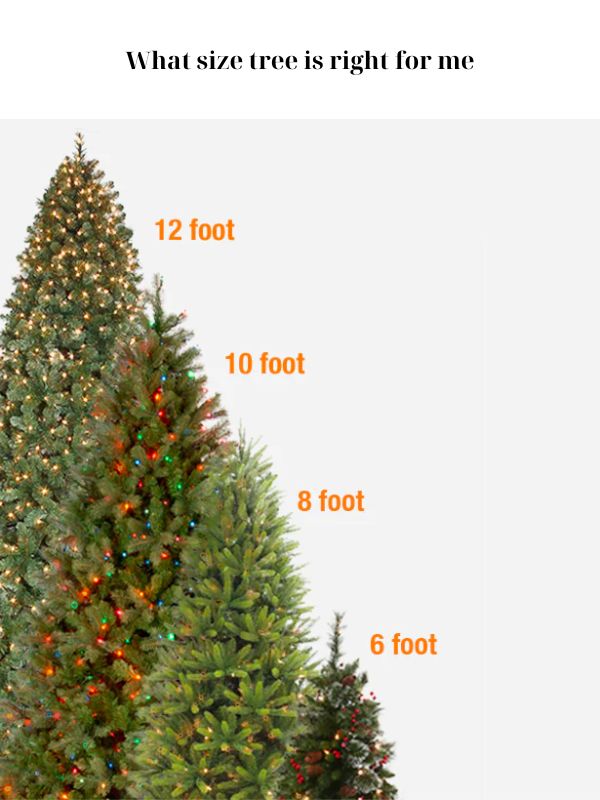

Hi, I’m Eugene B. Conley – the CEO of cybermondaychristmastree.com. I was born on December 13, 2000, and I’m a proud Sagittarius. I currently live at 3524 Reeves Street in Green Bay, WI 54301.
Before becoming the CEO of cybermondaychristmastree, I worked as a Meter Reader at The Pink Pig Tavern. While I enjoyed my time there, I had a passion for e-commerce and technology. I decided to pursue my dreams and started my own online venture.
At cybermondaychristmastree, we offer the best deals on Christmas trees during the Black Friday season, from Amazon to Walmart and many more. We help customers find the perfect tree for their homes at the most affordable prices, while also making their holiday shopping experience seamless.
Thank you for taking the time to read about me and my journey at Cyber Monday. I am committed to providing excellent service and quality products to all our customers.
